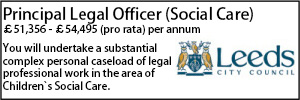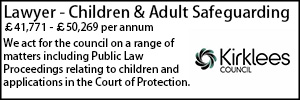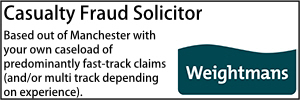Judges dismiss care proceedings appeal even though all parties were in support
The Court of Appeal (Civil Division) has taken the rare step of dismissing an appeal over the outcome of a fact-finding hearing even through it was supported by the parties in the case.
- Details
Lord Justice Baker said the appeal was brought by a local authority against the outcome of a fact-finding hearing in care proceedings involving K, a girl now aged three, and G, a boy now, now aged 2.
He said: “The appeal is supported by the children’s guardian and by the children’s parents. All parties seek a rehearing of the fact-finding hearing before another judge.
“Whether an appeal should be allowed is, however, a decision for the appellate court, not the parties. It will, of course, be unusual for the court to dismiss an appeal which is supported by the other parties. But in my view, this is just such a case.”
Baker LJ explained the proceedings had already lasted more than two years, far in excess of the 26 weeks given in the Children Act 1989, s.32(1) and were not yet concluded.
He called this delay “alarming and unacceptable” because the issues involved “are not complex” and fell "at the less serious end of the scale for care proceedings”.
There had been uncertainty about expert evidence, “but it is difficult to understand how it can account for or justify a delay on this scale”.
Events began in May 2023, when the mother took G to the doctor for an injury to his ear. The doctor referred him for a child protection medical examination which was conducted the following day.
Various bruises were found and injuries later attributed to bite marks, and the case was referred to the police.
In June 2023, the local authority started care proceedings for both children and they began living with their maternal grandfather and his partner,
Following the initial child protection medical, the mother disclosed three photographs of G showing similar injuries to his left cheek.
A fact finding hearing took place before Recorder Hennessy in March 2025, where she considered expert evidence at length and concluded that while medical evidence suggested that it was more likely to be the father than the mother that inflicted the injuries, it was not possible on the medical evidence alone to identify a perpetrator. The evidence as to opportunity pointed to the mother being the perpetrator because she was “ever present” and denied ever hearing an abnormal cry.
Recorder Hennessy concluded: “On the totality of the evidence, when I put the wider context into the frame, and I ask myself who is on the list, can I identify a perpetrator, and, if not, is there a likelihood or a real possibility they should be placed in the pool, I come to the conclusion that both of them are on that list, I cannot clearly identify a perpetrator, and there is a likelihood or a real possibility that they should be placed in the pool.”
Her summarised findings were that the injuries to G’s right cheek, left cheek and left shoulder were bite marks, injuries identified in photographs were, on a balance of probabilities, bite marks for which the possible perpetrators were the mother and father but neither could be identified the perpetrator on a balance of probabilities. An injury to the ear was “unexplained”.
The local authority appealed on the grounds that the recorder fell into error as she failed to reference the schedule of findings document and failed to outline the findings sought by the local authority, and that she also fell into error by failing to properly analyse the evidence in respect of the parents.
It also said the recorder failed to properly assess the evidence in relation to other injuries.
This appeal was supported by the children’s guardian, who argued the recorder’s analysis of the perpetrator issue “was insufficient, muddled and unclear”, so that the pool finding was unsafe.
The mother also supported the local authority’s appeal, claiming the recorder erred in failing to identify the fathers the perpetrator. The father endorsed the local authority’s argument that the judgment lacked the clarity needed for a risk assessment.
Giving judgment, Baker LJ said: “The local authority could have gone back to the judge seeking clarification about those matters [it claimed were unclear].
“But having decided that the whole judgment was defective, they elected to proceed by way of appeal.”
He said remitting the case to the recorder to make additional findings “would be unnecessary and wrong”.
Baker Lj said neither the local authority nor the guardian contended the recorder was wrong to conclude that she could not identify a perpetrator of the bite marks.
Both the local authority and the guardian complained the analysis was insufficiently detailed and lacked coherence.
But Baker LJ said this was wrong as the recorder's analysis took account of her earlier analysis of the parents’ evidence and credibility but was unable to identify which parent was the perpetrator.
“She reached that conclusion after setting out her analysis of the evidence,“ Baker LJ said.
“Although she plainly did not refer to all of the evidence, her reasoning is sufficient to demonstrate to this court why she reached her decision. In short, while the medical evidence suggested that the father was more likely to be the perpetrator, the recorder concluded that it was insufficient by itself to support such a finding.
“Other evidence pointed away from the father being responsible – in particular, that the father was hardly ever alone with the children and that the mother denied ever hearing an abnormal cry. Insofar as it was permissible for the argument to be put on behalf of the mother before this court that the recorder erred in failing to identify the father as the perpetrator of the injuries, I would reject it.”
Baker LJ said the recorder was unable to identify a perpetrator on a balance of probabilities, and “that conclusion is unassailable in this court”.
Lord Justice Singh and Lord Justice Stuart-Smith both agreed.
Mark Smulian
































